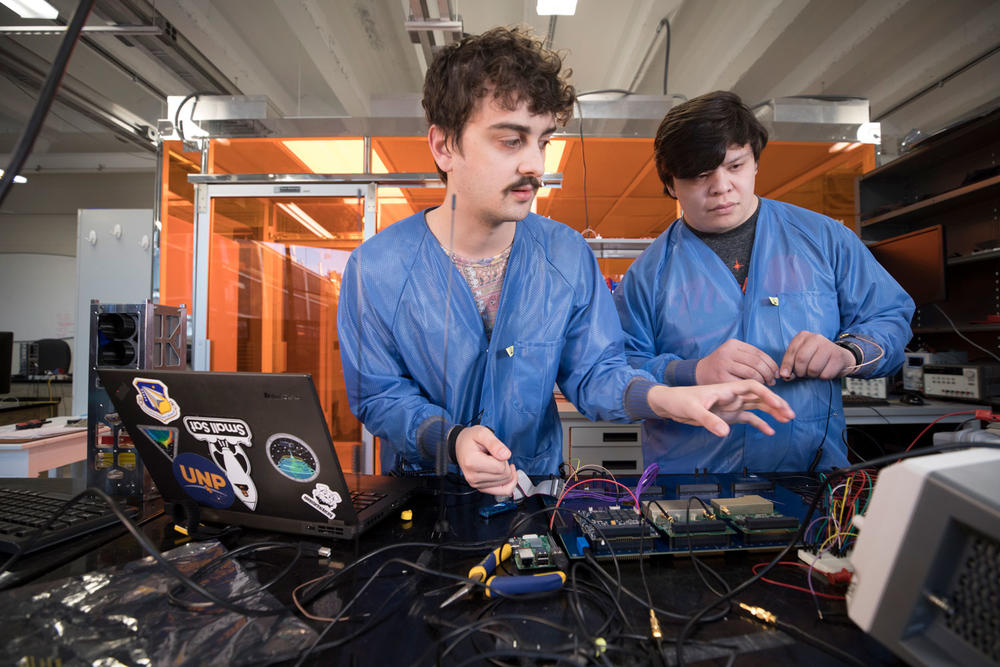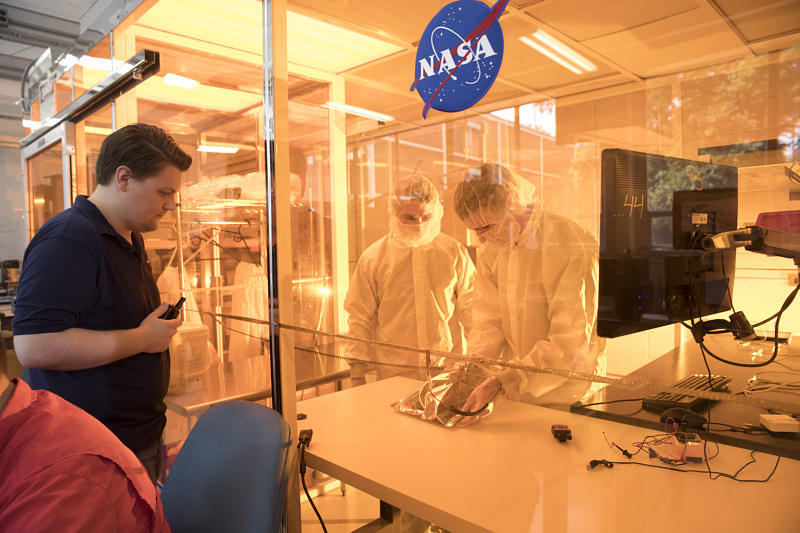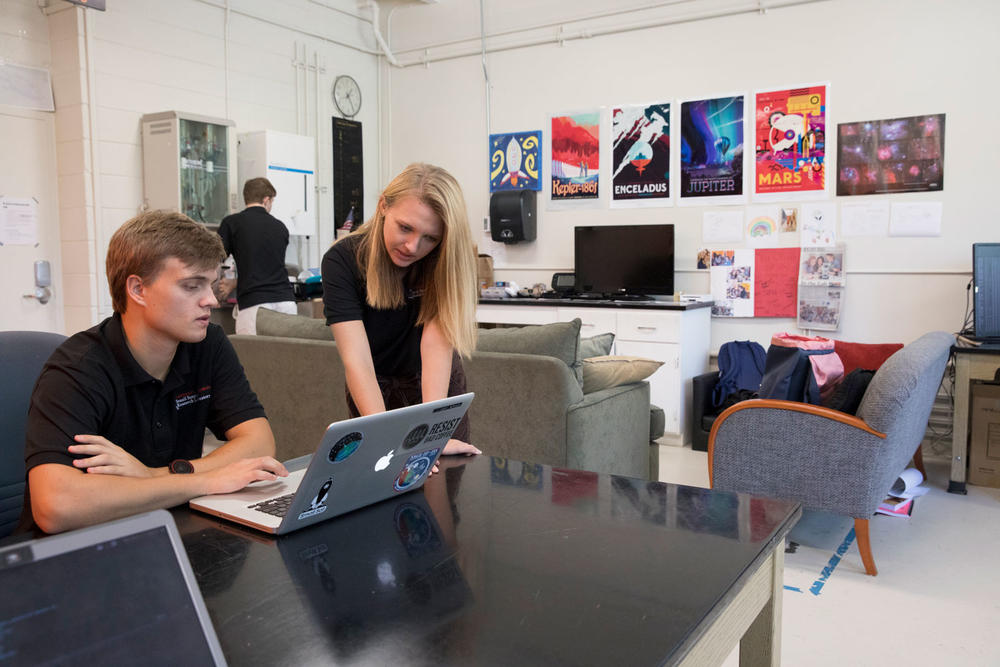Section Branding
Header Content
UGA To Launch Tissue-Box Sized Satellite
Primary Content
The first launch is scheduled for late 2019 for one of two cube satellites made by the Small Satellite Research Laboratory at the University of Georgia.
Cube satellites, otherwise known as CubeSats, weigh less than three pounds and are approximately the size of a loaf of bread. Catching a ride on a rocket from a "launch provider," each satellite plans to be in orbit between two and two and a half years.
On Second Thought host Virginia Prescott speaks with David Cotten, Hollis Neel and Katie Summey.
The Spectral Ocean Color Satellite, or SPOC, plans to gather images from space of Georgia's coast, helping researchers at UGA better assess the health of ocean and marsh ecosystems. The second satellite, the Multi-view Onboard Computational Imager, MOCI for short, strives to innovate satellite pre-processing of data before it gets sent back to earth. If successful, this new technique could revolutionize practices for other NASA projects.
Members of the lab come from every corner of campus with faculty from geography, engineering, math, physics, chemistry and oceanography providing guidance. Driven by the passion of the students, the lab combines ambitious technical feats with fun and creativity.
Associate Director David Cotton, lab co-founder and systems engineer Hollis Neel, and payload lead Katie Summey joined On Second Thought to share how thinking small can make big changes in satellite technology.
Get in touch with us.
Twitter: @OSTTalk
Facebook: OnSecondThought
Email: OnSecondThought@gpb.org
Phone: 404-500-9457



